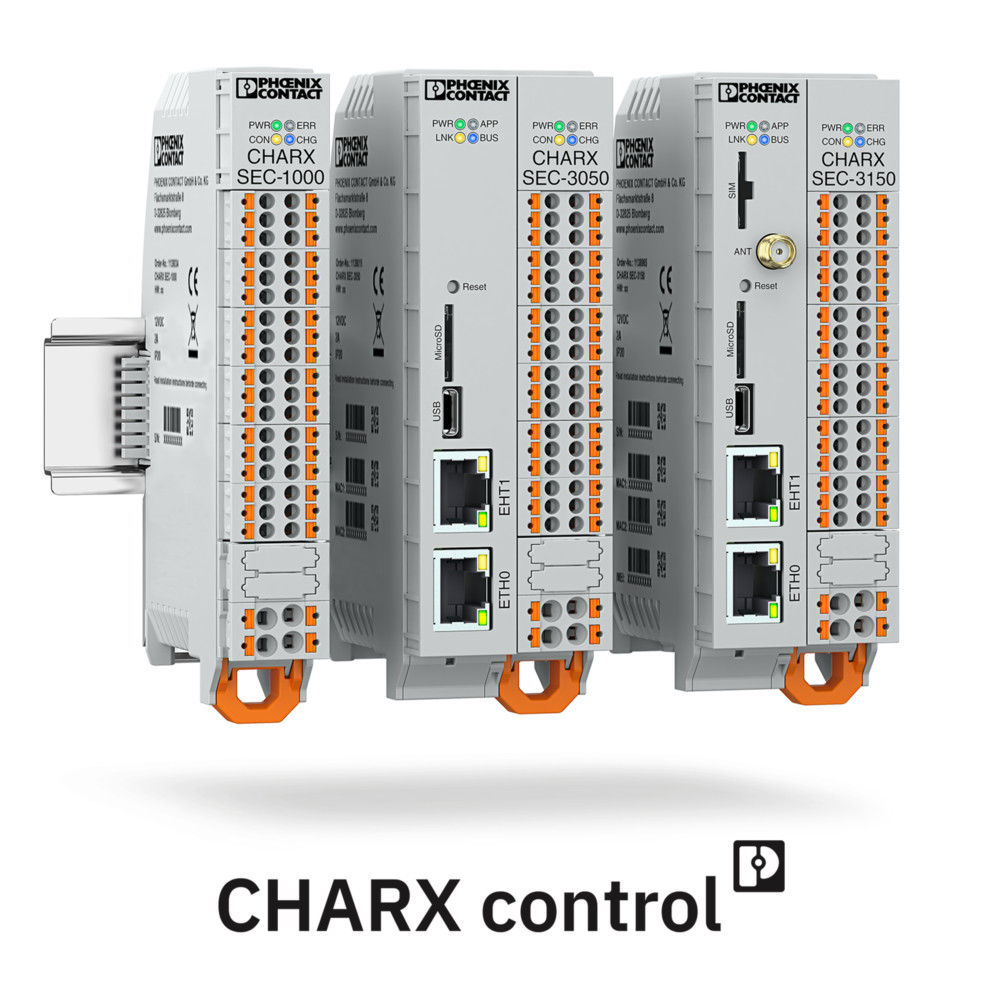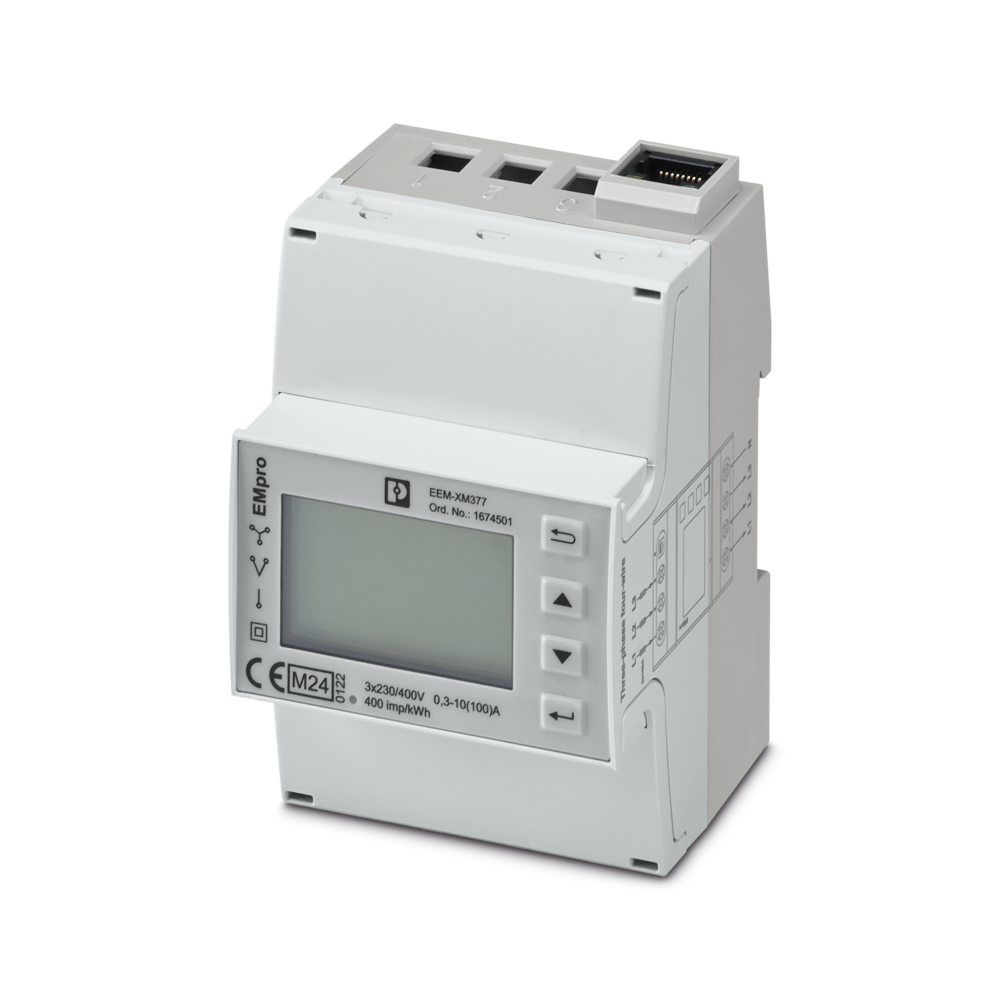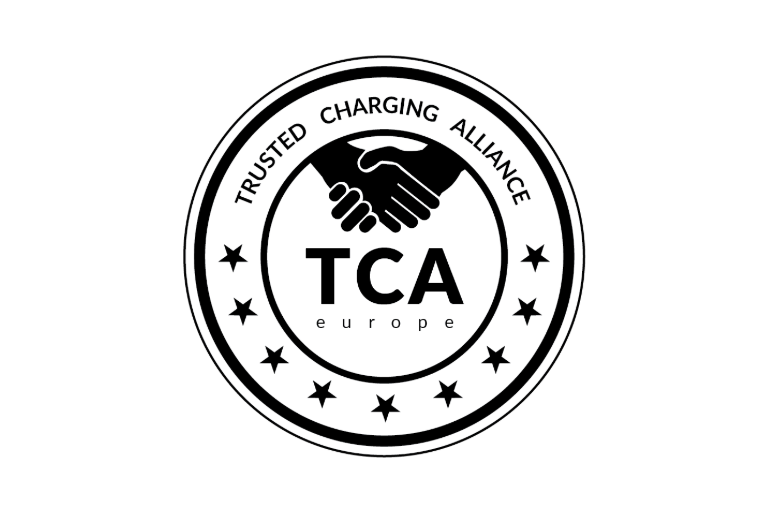An important component of e-mobility is the coupling of the various sectors such as energy grids, buildings, local generators, charging stations and electric vehicles. Communication is therefore the key to sustainable and integrated e-mobility that relies on renewable energies.
What is sector coupling?
Sector coupling describes the intelligent connection of electricity, heat, mobility and industry .
The aim is to use energy efficiently and in an integrated manner in order to conserve resources and reduce CO₂ emissions. The focus is on converting renewable energies, e.g. from wind or sun, into electricity. This can be used flexibly for buildings or charging electric vehicles, for example.
How do charging stations, buildings and the electricity grid communicate with each other?
Intelligent networking is based on communication between charging stations, energy management systems and the electricity grid. These systems continuously exchange information via standardized interfaces, for example on the current grid load, self-consumption or available energy quantities. For example, the charging process for electric vehicles can be flexibly adapted to supply and demand.
Advantages of intelligent networking for sustainable and economical energy use:
By communicating with the energy management system, they record
- charging processes are optimized (e.g. at night),
- peak loads are reduced,
- energy costs are lowered,
- the integration of renewable energies and the security of supply
- the security of supply
be promoted.
Energy management system for optimal energy distribution
Building automation, battery storage systems and charging infrastructure are at the heart of modern energy management. The building automation controls all important processes centrally and adjusts the energy flows to the current demand in real time. Buffer batteries store surplus electricity generated by photovoltaic or wind power plants, for example. The stored electricity is then available at a later point in time when no or insufficient sustainable energy is available.
A smart charging infrastructure complements this system by recognizing when cheap energy is available and controlling the charging process of an electric car in a targeted manner. For example, users can charge their electric vehicles when their own consumption of renewable energy is at its highest and thus reduce their electricity costs.
What role do charging stations play in energy management?
Charging stations play a key role in the energy management of modern buildings. They are not only charging points for electric vehicles, but also intelligent interfaces between the electricity grid, the building management system and the electric vehicles.
By communicating with the energy management system, they record:
- the current grid load,
- the self-consumption,
- and adapt the charging process accordingly.
Flexible control allows the proportion of self-generated electricity in the charging process to be maximized. Intelligent charging stations automatically adjust the charging power and document all energy flows.
With an intelligent charging controller, electric vehicle batteries can not only be charged intelligently. They can also return electricity to the grid. This turns fleets into profitable energy storage systems by using electric vehicles as electricity buffers.
What is bidirectional charging and what advantages does it offer as part of the energy system?
Bidirectional charging turns electric vehicles into active components of the energy system. They can supply electricity to the household (vehicle-to-home) and feed it into the grid (vehicle-to-grid) . This supports grid stability and turns electric vehicles into flexible electricity storage systems.
How do building networking and electricity grids work together?
Connected buildings and electricity grids continuously coordinate their capacities to ensure efficient energy distribution. In the event of high demand or bottlenecks in the public grid, energy management systems can react flexibly and distribute electricity to individual users in a targeted manner. In the event of an energy oversupply, energy is either stored on site or fed into the grid to avoid peak loads and improve grid stability.
How does dynamic load management work?
Dynamic load management monitors and analyzes the current energy consumption in real time. It recognizes when more or less electricity is needed at charging stations or in buildings and optimally distributes the available energy. Dynamic load management not only records current data, but also takes into account forecasts of future consumption and electricity generation, especially when using renewable energies. If the system detects a higher demand for electricity because several e-vehicles are to be charged at the same time, it automatically prioritizes the most important consumers and postpones less urgent charging processes to a later time.
Available energy is thus always optimally distributed to the individual consumers in the building and overloads are avoided.
What is static load management?
In contrast to dynamic load management, static load management provides for a fixed distribution of energy, regardless of actual consumption behavior.
Practical example: Experiencing sector coupling at Phoenix Contact
The All Electric Society Factory shows what modern energy supply can look like in a building: A 650 V DC grid, fed from the public AC grid and a PV system, is supplemented by battery storage systems and bidirectionally connected electric vehicles. Controlled via PLCnext Control and an energy management system, peak loads are efficiently buffered. Especially in combination with DC fast charging stations for electric vehicles, there are numerous advantages for energy efficiency and flexibility.
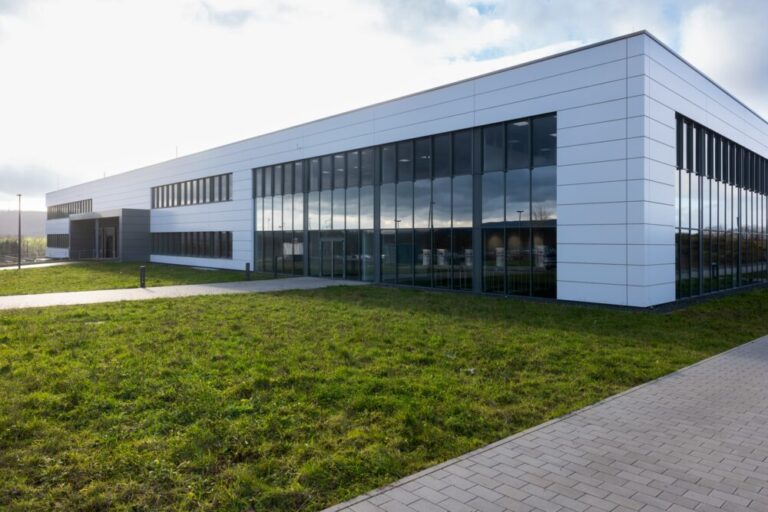
DC charging in DC microgrids (direct current networks) in industrial buildings offers numerous advantages, especially in combination with DC fast charging stations for electric vehicles.
A visit to Phoenix Contact’s All Electric Society Park in Blomberg offers an exclusive insight into the concept of sector coupling: the aim is to generate as much of our own electricity as possible using renewable energies and thus reduce our dependence on external energy sources. To achieve this, an optimized and flexible energy system is used to network generators and consumers with each other and coordinate them optimally.

The current energy requirement at the All Electric Society Park is around 1.2 MWh. A large battery storage system with 78 modules and a central inverter supplies up to 1 MVA to absorb power peaks in the e-mobility charging park. There is also a 225 kVA battery storage system in the charging park as a power booster. Surplus photovoltaic energy can be fed into both storage units, providing a total storage capacity of up to 1.5 MWh. This increases the proportion of renewable electricity and ensures flexible energy management.
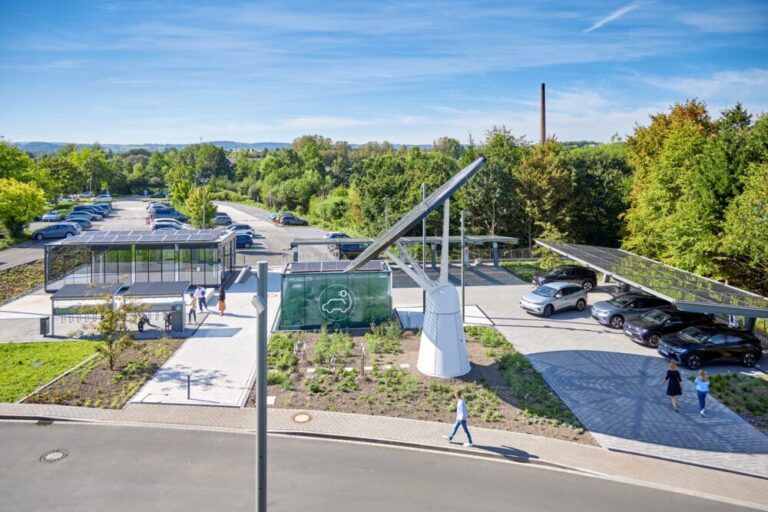
Conclusion
Efficient and intelligent networking of charging stations, buildings and electricity grids makes sustainable energy use suitable for everyday use. The practical integration of renewable energies and the automatic control of energy flows ensure that available energy is used optimally and costs are reduced. Intelligent load management systems and the combination of the electricity, heating and mobility sectors create a flexible, stable and sustainable overall system.
FAQ
Frequently asked questions
What is sector coupling and why is it important?
Sector coupling describes the intelligent connection of the electricity, heating, mobility and industrial sectors. The aim is to use energy efficiently and in an integrated manner in order to conserve resources and reduce CO₂ emissions. The focus is on converting renewable energies, e.g. from wind or sun, into electricity that can be used flexibly for buildings or for charging electric vehicles.
How does the intelligent networking of charging stations, buildings and electricity grids work?
Intelligent networking is based on communication between charging stations, energy management systems and the electricity grid. These systems continuously exchange information via standardized interfaces, for example on the current grid load or available energy quantities. This allows the charging process of electric vehicles to be flexibly adapted to supply and demand, which reduces peak loads, lowers energy costs and promotes the integration of renewable energies.
What role do charging stations play in modern energy management?
Charging stations are not only charging points for electric vehicles, but also intelligent interfaces between the electricity grid, building management and vehicles. They communicate with the energy management system, record the current grid load and self-consumption and adapt the charging process accordingly. The proportion of self-generated electricity in the charging process can be maximized through flexible control. Modern charging stations also enable bidirectional charging so that electric vehicles can be used as electricity storage units.
Discover suitable products now
Here you will find a selection of relevant products – based on the topics and recommendations from our blog post.
